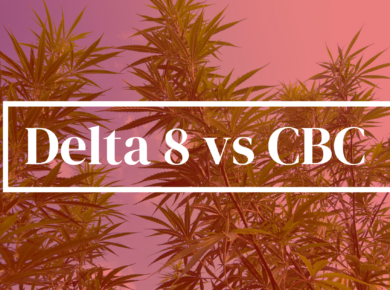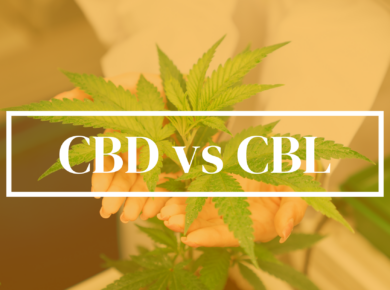Getting the most out of your harvest is the goal of every grower, no matter your crop. When it comes to cannabis though, once the buds are cut, there is a lot of plant left over.
So What Do You Do with All of the Leaves, Stalks, Stems, Roots, and Even Soil?
Biomass, or the leftover plant material, can be used in a numerous ways. Biomass comes in a number of its own varieties. Some farmers mulch the entire plant. Others focus solely on leaves or roots. Some solely use trim to create high-potency oils. Using biomass promotes regenerative, sustainable gardening, and can also be quite enjoyable.

Many farmers sell biomass to concentrate processors. This is a great way to increase revenue and build relationships within the local cannabis community.
These leftover materials can be used to make a number of specialized products. Take a look at just some of the ways to utilize the rest of your hemp and cannabis harvest.
What to Do with Hemp and Cannabis Stalks?
The stalks of hemp pants can be broken down and shipped off for use in all kinds of textile industries. These industries include building materials, garments, and even utility equipment. Businesses with accounts on Kush.com can connect directly with buyers from across the nation. Create your free account now by clicking here.
If you don’t have a supply chain, and aren’t a member of Kush.com, then you could simply mulch them. Mulching can be done by shredding the stalks. Shredding creates more surface area for a quicker decomposition. Shredded stalks can be applied on top of the soil in your garden, yard or in the compost bin.
Mulching or composting is very valuable, because it gives life back to the soil. In compost micro-organisms break down organic matter. This produces nitrogen and other minerals in the process.
Mulched stalks can be returned to a crop next season. You could also use them to grow a variety of other crops if you choose, because it’s nutrient dense.
In mulch, the shredded pieces of stalk decrease evaporation and allow the soil to hold moisture more effectively. This can be great for growing in arid, hot climates.
A micro-biome is also created when mulch is applied to the ground as well. This creates an environment for beneficial bugs, bacteria, and other wildlife to grow and thrive
Stalks can be shredded by purchasing or renting a wood chipper. You could also simply mow them with a gas powered mower or tractor with a shredder attached.
What to Do with Cannabis Leaves?
Sugar leaves are rich and coated with trichomes giving them higher CBD and THC content. Although not as potent as their bud brothers and sisters, they can still be used to make tea, hash, or topical oils.
For hash, sugar leaves can be dried, chopped, and further processed into hash or cannabutter. These processed items can go into a wide variety of products.
Larger fan leaves are perfect for making teas. Fan leaves can be dried and stored in a sealed container with a silicone packet to regulate moisture. When you’re ready, the leaves can be placed in a cup, bathed in hot water and sipped to your enjoyment and leisure.
For oil production, a great number of leaves have to be collected. Once you have enough, press them to gain a rich oil that can be used in a multitude of products or distributed on it’s own.
What to Do with Cannabis Roots?
As with all parts of biomass, roots can be used in a multitude of ways. Roots have a long history of medicinal use due to their anti-inflammatory properties.
Roots can be brewed into a tea for gastrointestinal relief. They are also commonly processed into topical ointments or salves for skin ailments.
Processing roots has been done for generations across the world. Creams and salves have been known to help with arthritis, gout, burns, rashes, and muscle pain.
Want to give it a try at home? Boil some into your next cup of tea or process a few roots for use in a topical lotion to treat aches and pains. To learn more on the benefits of cannabis roots check out The National Library of Medicine.
What to Do with Cannabis Soil?
Let us not forget about the soil. Here is where all the magic begins. Feed the soil and it will feed your plant.
At the end of the harvest, soil is low in minerals and nutrients, but can still be used a number of ways. If you plan on replanting in the same soil, try applying some minerals and additions. Compost or a seed starting solid fertilizer (NPK 4-4-4) are great places to start.
Also, before planting any new seeds or started plants, give the soil a good till or cultivation. This can be as simple as stirring the new compost or fertilizer into the soil with your hand if it’s in pots. You could also get a cultivator and till up the ground if outdoors. This not only combines the soil with the new amendments, but it also introduces a vital compound into the equation, oxygen.
This aerates the soil and allows life to grow more vigorously. In this case microorganisms and beneficial fungi. This simple task can go a long way in starting your next crop in the right direction. If you plan on replacing all your potting soil with new potting soil, the old soil can be composted as well.
When going this route, be sure to combine the soil with as close to equal parts brown material ( dried leaves, dried stalks, dried “brown” organic matter) and green material (freshly cut “green” leaves, stems, veggies, etc.). This allows the compost to start it’s process of new life with the right balance of ingredients.
Remember composting isn’t only decomposing matter, it’s also consuming matter. It’s about creating the right environment for beneficial bacteria, fungi, insects, and worms to live, work, and feed in harmony. Giving you a nutrient rich source for enriching your soil and growing healthy crops for years to come.
[PRO TIP] Remember that any plants or soil with pests or disease should not be composted. These will continue to grow and infect your compost bin and every future crop it is applied to. A trash heap, landfill, or burn pile is more suited place to dispose of it.






